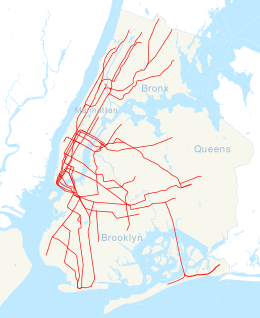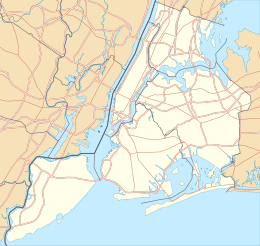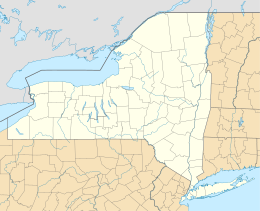railroad.wikisort.org - Station
The 111th Street station is a local station on the IRT Flushing Line of the New York City Subway, located at the intersection of 111th Street and Roosevelt Avenue.[3] It is served by the 7 train at all times.[4]
111 Street | ||||||||||||||||||||||||||||||||||||||||||||||||||||||||||||||||||||||||||||||||||||||||||||||||||||||||||||||||||||||||||||||||||||||||||||||||||||||||||||||||||||||||||||||||||||||||||||||||||||||||||||||||||||||||||||||
|---|---|---|---|---|---|---|---|---|---|---|---|---|---|---|---|---|---|---|---|---|---|---|---|---|---|---|---|---|---|---|---|---|---|---|---|---|---|---|---|---|---|---|---|---|---|---|---|---|---|---|---|---|---|---|---|---|---|---|---|---|---|---|---|---|---|---|---|---|---|---|---|---|---|---|---|---|---|---|---|---|---|---|---|---|---|---|---|---|---|---|---|---|---|---|---|---|---|---|---|---|---|---|---|---|---|---|---|---|---|---|---|---|---|---|---|---|---|---|---|---|---|---|---|---|---|---|---|---|---|---|---|---|---|---|---|---|---|---|---|---|---|---|---|---|---|---|---|---|---|---|---|---|---|---|---|---|---|---|---|---|---|---|---|---|---|---|---|---|---|---|---|---|---|---|---|---|---|---|---|---|---|---|---|---|---|---|---|---|---|---|---|---|---|---|---|---|---|---|---|---|---|---|---|---|---|---|---|---|---|---|---|---|---|---|---|---|---|---|---|---|---|---|
 A view of the platform as seen from an express train on the flyover track. | ||||||||||||||||||||||||||||||||||||||||||||||||||||||||||||||||||||||||||||||||||||||||||||||||||||||||||||||||||||||||||||||||||||||||||||||||||||||||||||||||||||||||||||||||||||||||||||||||||||||||||||||||||||||||||||||
| Station statistics | ||||||||||||||||||||||||||||||||||||||||||||||||||||||||||||||||||||||||||||||||||||||||||||||||||||||||||||||||||||||||||||||||||||||||||||||||||||||||||||||||||||||||||||||||||||||||||||||||||||||||||||||||||||||||||||||
| Address | 111th Street & Roosevelt Avenue Queens, NY 11368 | |||||||||||||||||||||||||||||||||||||||||||||||||||||||||||||||||||||||||||||||||||||||||||||||||||||||||||||||||||||||||||||||||||||||||||||||||||||||||||||||||||||||||||||||||||||||||||||||||||||||||||||||||||||||||||||
| Borough | Queens | |||||||||||||||||||||||||||||||||||||||||||||||||||||||||||||||||||||||||||||||||||||||||||||||||||||||||||||||||||||||||||||||||||||||||||||||||||||||||||||||||||||||||||||||||||||||||||||||||||||||||||||||||||||||||||||
| Locale | Corona | |||||||||||||||||||||||||||||||||||||||||||||||||||||||||||||||||||||||||||||||||||||||||||||||||||||||||||||||||||||||||||||||||||||||||||||||||||||||||||||||||||||||||||||||||||||||||||||||||||||||||||||||||||||||||||||
| Coordinates | 40°45′6.17″N 73°51′20.29″W | |||||||||||||||||||||||||||||||||||||||||||||||||||||||||||||||||||||||||||||||||||||||||||||||||||||||||||||||||||||||||||||||||||||||||||||||||||||||||||||||||||||||||||||||||||||||||||||||||||||||||||||||||||||||||||||
| Division | A (IRT)[1] | |||||||||||||||||||||||||||||||||||||||||||||||||||||||||||||||||||||||||||||||||||||||||||||||||||||||||||||||||||||||||||||||||||||||||||||||||||||||||||||||||||||||||||||||||||||||||||||||||||||||||||||||||||||||||||||
| Line | IRT Flushing Line | |||||||||||||||||||||||||||||||||||||||||||||||||||||||||||||||||||||||||||||||||||||||||||||||||||||||||||||||||||||||||||||||||||||||||||||||||||||||||||||||||||||||||||||||||||||||||||||||||||||||||||||||||||||||||||||
| Services | 7 | |||||||||||||||||||||||||||||||||||||||||||||||||||||||||||||||||||||||||||||||||||||||||||||||||||||||||||||||||||||||||||||||||||||||||||||||||||||||||||||||||||||||||||||||||||||||||||||||||||||||||||||||||||||||||||||
| Transit | ||||||||||||||||||||||||||||||||||||||||||||||||||||||||||||||||||||||||||||||||||||||||||||||||||||||||||||||||||||||||||||||||||||||||||||||||||||||||||||||||||||||||||||||||||||||||||||||||||||||||||||||||||||||||||||||
| Structure | Elevated | |||||||||||||||||||||||||||||||||||||||||||||||||||||||||||||||||||||||||||||||||||||||||||||||||||||||||||||||||||||||||||||||||||||||||||||||||||||||||||||||||||||||||||||||||||||||||||||||||||||||||||||||||||||||||||||
| Platforms | 2 side platforms | |||||||||||||||||||||||||||||||||||||||||||||||||||||||||||||||||||||||||||||||||||||||||||||||||||||||||||||||||||||||||||||||||||||||||||||||||||||||||||||||||||||||||||||||||||||||||||||||||||||||||||||||||||||||||||||
| Tracks | 5 (2 local in passenger service at platform level; 1 express track above) | |||||||||||||||||||||||||||||||||||||||||||||||||||||||||||||||||||||||||||||||||||||||||||||||||||||||||||||||||||||||||||||||||||||||||||||||||||||||||||||||||||||||||||||||||||||||||||||||||||||||||||||||||||||||||||||
| Other information | ||||||||||||||||||||||||||||||||||||||||||||||||||||||||||||||||||||||||||||||||||||||||||||||||||||||||||||||||||||||||||||||||||||||||||||||||||||||||||||||||||||||||||||||||||||||||||||||||||||||||||||||||||||||||||||||
| Opened | October 13, 1925 | |||||||||||||||||||||||||||||||||||||||||||||||||||||||||||||||||||||||||||||||||||||||||||||||||||||||||||||||||||||||||||||||||||||||||||||||||||||||||||||||||||||||||||||||||||||||||||||||||||||||||||||||||||||||||||||
| Opposite- direction transfer | Yes | |||||||||||||||||||||||||||||||||||||||||||||||||||||||||||||||||||||||||||||||||||||||||||||||||||||||||||||||||||||||||||||||||||||||||||||||||||||||||||||||||||||||||||||||||||||||||||||||||||||||||||||||||||||||||||||
| Traffic | ||||||||||||||||||||||||||||||||||||||||||||||||||||||||||||||||||||||||||||||||||||||||||||||||||||||||||||||||||||||||||||||||||||||||||||||||||||||||||||||||||||||||||||||||||||||||||||||||||||||||||||||||||||||||||||||
| 2019 | 3,836,999[2] | |||||||||||||||||||||||||||||||||||||||||||||||||||||||||||||||||||||||||||||||||||||||||||||||||||||||||||||||||||||||||||||||||||||||||||||||||||||||||||||||||||||||||||||||||||||||||||||||||||||||||||||||||||||||||||||
| Rank | 129 out of 424[2] | |||||||||||||||||||||||||||||||||||||||||||||||||||||||||||||||||||||||||||||||||||||||||||||||||||||||||||||||||||||||||||||||||||||||||||||||||||||||||||||||||||||||||||||||||||||||||||||||||||||||||||||||||||||||||||||
| ||||||||||||||||||||||||||||||||||||||||||||||||||||||||||||||||||||||||||||||||||||||||||||||||||||||||||||||||||||||||||||||||||||||||||||||||||||||||||||||||||||||||||||||||||||||||||||||||||||||||||||||||||||||||||||||
| ||||||||||||||||||||||||||||||||||||||||||||||||||||||||||||||||||||||||||||||||||||||||||||||||||||||||||||||||||||||||||||||||||||||||||||||||||||||||||||||||||||||||||||||||||||||||||||||||||||||||||||||||||||||||||||||
| ||||||||||||||||||||||||||||||||||||||||||||||||||||||||||||||||||||||||||||||||||||||||||||||||||||||||||||||||||||||||||||||||||||||||||||||||||||||||||||||||||||||||||||||||||||||||||||||||||||||||||||||||||||||||||||||
| ||||||||||||||||||||||||||||||||||||||||||||||||||||||||||||||||||||||||||||||||||||||||||||||||||||||||||||||||||||||||||||||||||||||||||||||||||||||||||||||||||||||||||||||||||||||||||||||||||||||||||||||||||||||||||||||
| ||||||||||||||||||||||||||||||||||||||||||||||||||||||||||||||||||||||||||||||||||||||||||||||||||||||||||||||||||||||||||||||||||||||||||||||||||||||||||||||||||||||||||||||||||||||||||||||||||||||||||||||||||||||||||||||
History

The station opened on October 13, 1925,[5] with shuttle service between 111th Street and the previous terminal at Alburtis Avenue (now 103rd Street–Corona Plaza).[6] Shuttle service used the Manhattan-bound track.[7] The line was extended to Willets Point Boulevard (now Mets–Willets Point) on May 7, 1927,[8] and to the current terminal at Flushing–Main Street on January 21, 1928.[9]
The city government took over the IRT's operations on June 12, 1940.[10][11] The IRT routes were given numbered designations in 1948 with the introduction of "R-type" rolling stock, which contained rollsigns with numbered designations for each service.[12] The route from Times Square to Flushing became known as the 7.[13] On October 17, 1949, the joint BMT/IRT operation of the Flushing Line ended, and the line became the responsibility of the IRT.[14] After the end of BMT/IRT dual service, the New York City Board of Transportation announced that the Flushing Line platforms would be lengthened to 11 IRT car lengths; the platforms were only able to fit nine 51-foot-long IRT cars beforehand.[15][16] The platforms at the station were extended in 1955–1956 to accommodate 11-car trains.[17] However, nine-car trains continued to run on the 7 route until 1962, when they were extended to ten cars.[18] With the opening of the 1964 New York World's Fair, trains were lengthened to eleven cars.[19][20]
As part of the 2015–2019 Capital Program, the MTA would renovate the 52nd, 61st, 69th, 82nd, 103rd and 111th Streets stations, a project that has been delayed for several years but is slated to begin in mid-2020. Conditions at these stations were among the worst of all stations in the subway system.[21]
Station layout
| 3F | Peak-direction express | ← |
| 2F Platform level |
Side platform | |
| Southbound local | ← | |
| Yard lead | No regular service | |
| Yard lead | No regular service | |
| Northbound local | | |
| Side platform | ||
| 1F | Mezzanine | Fare control, station agent, MetroCard machines |
| G | Street level | Entrances/exits |

The station has five tracks and two side platforms. The express track is located on a flyover above the other four tracks. The two center tracks are not used in passenger service, but instead are used as yard leads of the Corona Yard, where 7 trains are maintained and stored. As a result, trains that go to/from the yard often terminate or begin at this station.[22][23][24] Stations with flyover express tracks such as this were far more common on IRT elevated lines in Manhattan during the 19th and early 20th centuries. Due to the yard tracks, an unusual layout takes place in and east of the station. The two layup tracks only have connections to the main tracks east of the station. The eastbound track rises east of the station while the express track lowers. The layup tracks dive down and cross under the eastbound track. The westbound track then rises to level out the three tracks, which continue east.[25]
This station has full windscreens except at the west end of the eastbound platform, which has a waist-high steel fence instead.
Exits
Exit is at the south (geographic west) end, with staircases to all four corners of 111th Street and Roosevelt Avenue.[23][3] The mezzanine and stairway landings are wooden while the flooring at the fare control area is concrete.[26] The station has a crossunder between platforms. New signs have covered the old ones. Above some of the black station signs reading "111 Street" are white signs reading "Hall of Science", identifying the nearby New York Hall of Science five blocks south.[3][23][27][28]
References
- "Glossary". Second Avenue Subway Supplemental Draft Environmental Impact Statement (SDEIS) (PDF). Vol. 1. Metropolitan Transportation Authority. March 4, 2003. pp. 1–2. Archived from the original (PDF) on February 26, 2021. Retrieved January 1, 2021.
- "Facts and Figures: Annual Subway Ridership 2014–2019". Metropolitan Transportation Authority. 2020. Retrieved May 26, 2020.
- "MTA Neighborhood Maps: Corona" (PDF). Metropolitan Transportation Authority. 2018. Retrieved October 1, 2018.
- "7 Subway Timetable, Effective September 13, 2020". Metropolitan Transportation Authority. Retrieved December 9, 2020.
- State of New York - Transit Commission (1926). Fifth annual report for the calendar year 1925 (Report). Albany, N.Y.: J.B. Lyon Company. pp. 86.
- "First Trains to be Run on Flushing Tube Line Oct. 13: Shuttle Operation Ordered to 111th Street Station on New Extension". Newspapers.com. Brooklyn Daily Eagle. October 5, 1925. p. 8. Archived from the original on October 26, 2016. Retrieved September 20, 2015.
- Poor's Public Utility Section 1925. New York: Poor's Publishing Co. 1925. p. 523.
- "Corona Subway Extended; New Service Goes to Within 350 Feet of Flushing Creek Bridge". The New York Times. May 8, 1927. p. 26. Archived from the original on June 15, 2018. Retrieved September 26, 2009.
- "Flushing Rejoices as Subway Opens; Service by B.M.T. and I.R.T. Begins as Soon as Official Train Makes First Run. Hope of 25 Years Realized Pageant of Transportation Led by Indian and His Pony Marks the Celebration. Hedley Talks of Fare Rise. Transit Modes Depicted" (PDF). The New York Times. January 22, 1928. Retrieved September 18, 2015.
- "City Transit Unity Is Now a Reality; Title to I.R.T. Lines Passes to Municipality, Ending 19-Year Campaign". The New York Times. June 13, 1940. ISSN 0362-4331. Archived from the original on January 7, 2022. Retrieved May 14, 2022.
- "Transit Unification Completed As City Takes Over I. R. T. Lines: Systems Come Under Single Control After Efforts Begun in 1921; Mayor Is Jubilant at City Hall Ceremony Recalling 1904 Celebration". New York Herald Tribune. June 13, 1940. p. 25. ProQuest 1248134780.
- Brown, Nicole (May 17, 2019). "How did the MTA subway lines get their letter or number? NYCurious". amNewYork. Archived from the original on March 2, 2021. Retrieved January 27, 2021.
- Friedlander, Alex; Lonto, Arthur; Raudenbush, Henry (April 1960). "A Summary of Services on the IRT Division, NYCTA" (PDF). New York Division Bulletin. Electric Railroaders' Association. 3 (1): 2–3. Archived (PDF) from the original on September 14, 2020. Retrieved January 27, 2021.
- "Direct Subway Runs To Flushing, Astoria" (PDF). The New York Times. October 15, 1949. ISSN 0362-4331. Retrieved October 7, 2017.
- Bennett, Charles G. (November 20, 1949). "Transit Platforms On Lines In Queens To Be Lengthened; $3,850,000 Program Outlined for Next Year to Care for Borough's Rapid Growth New Links Are To Be Built 400 More Buses to Roll Also — Bulk of Work to Be on Corona-Flushing Route Transit Program In Queens Outlined". The New York Times. ISSN 0362-4331. Retrieved April 29, 2018.
- "37 Platforms On Subways To Be Lengthened: All Stations of B. M. T. and I.R.T.in Queens Included in $5,000,000 Program". New York Herald Tribune. November 20, 1949. p. 32. ISSN 1941-0646. ProQuest 1325174459.
- Minutes and Proceedings of the New York City Transit Authority. New York City Transit Authority. 1955. Archived from the original on September 13, 2020. Retrieved August 31, 2016.
- "R17s to the Flushing Line". New York Division Bulletin. Electric Railroaders' Association. 5 (6): M-8. December 1962 – via Issu.
- "TA to Show Fair Train". Long Island Star – Journal. August 31, 1963. Retrieved August 30, 2016 – via Fulton History.
- "A First-class Rapid Ride". Railway Age. Vol. 156, no. 21. June 1, 1964. p. 22. ProQuest 895766286.
- "MTA To Overhaul Six Stations on the 7 Line, Currently in Design Phase". Sunnyside Post. November 19, 2019. Archived from the original on August 19, 2020. Retrieved April 29, 2020.
- Marrero, Robert (January 1, 2017). "472 Stations, 850 Miles" (PDF). B24 Blog, via Dropbox. Retrieved April 27, 2018.
- Cox, Jeremiah. "111 Street (7) - The SubwayNut". www.subwaynut.com. Archived from the original on February 11, 2016. Retrieved February 18, 2016.
- "www.nycsubway.org: IRT Flushing Line". www.nycsubway.org. Archived from the original on March 2, 2016. Retrieved February 18, 2016.
- Dougherty, Peter (2006) [2002]. Tracks of the New York City Subway 2006 (3rd ed.). Dougherty. OCLC 49777633 – via Google Books.
- "7 Train". Station Reporter. August 11, 2014. Archived from the original on August 11, 2014. Retrieved February 18, 2016.
- Harpaz, Beth J. (April 10, 2014). "Revisiting NYC's 1964 World's Fair, 50 years later". San Diego Union Tribune. Associated Press. Archived from the original on April 6, 2020.
- Browne, Malcolm W. (September 5, 1986). "City Again Boasts a Science Museum". The New York Times. p. C-21. Archived from the original on May 24, 2015.
External links
- nycsubway.org – IRT Flushing Line: 111th Street
- Station Reporter — 7 Train
- The Subway Nut — 111th Street Pictures Archived February 11, 2016, at the Wayback Machine
- 111th Street entrance from Google Maps Street View
- Platforms from Google Maps Street View
На других языках
- [en] 111th Street station (IRT Flushing Line)
[ru] 111-я улица (линия Флашинг, Ай-ар-ти)
«111-я улица» (англ. 111th Street) — станция Нью-Йоркского метрополитена, расположенная на линии Флашинг, Ай-ар-ти. Станция находится в районе Корона, Куинс, на пересечении 111-й улицы с Рузвельт-авеню. На станции останавливается маршрут 7 (круглосуточно). Станцию проходит без остановки маршрут <7> (в часы пик в пиковом направлении).Другой контент может иметь иную лицензию. Перед использованием материалов сайта WikiSort.org внимательно изучите правила лицензирования конкретных элементов наполнения сайта.
WikiSort.org - проект по пересортировке и дополнению контента Википедии



